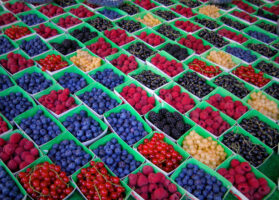Grape expectations — Suppliers talk varieties, packaging, season
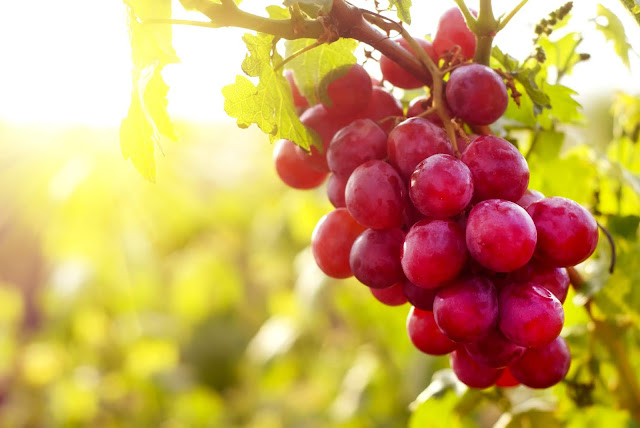
Overview of the grape varieties and the expected peak times for volume, complemented by charts from Agronometrics. Original published on May 18, 2020.
The Mexican grape season has been ramping up and the number of available varieties keeps on growing, even as the coronavirus pandemic continues to unfold in the U.S.
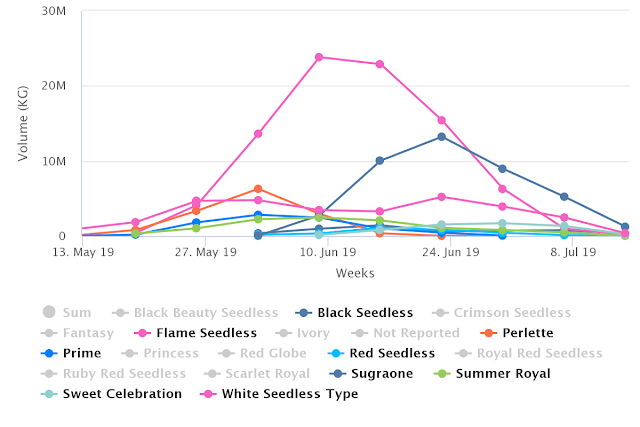
Source: USDA Market News via Agronometrics.
(Agronometrics users can view this chart with live updates here)
“Grape sales continue to move along at a steady pace despite COVID-19,” said Vivianna Greene, marketing manager for Los Angeles-based Pacific Trellis. “Much of this movement can be attributed to the fact that grapes eat and hold up well, their packaging eliminates direct exposure, and retail pricing has been consumer-friendly.”
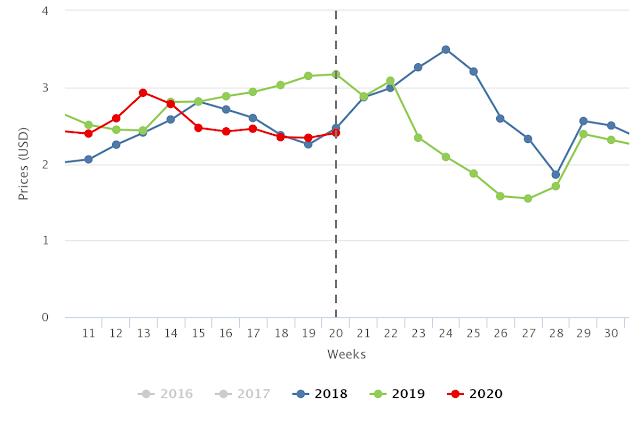
Source: USDA Market News via Agronometrics.
(Agronometrics users can view this chart with live updates here)
George Matoian, who handles sales and marketing for the Kingsburg, Calif., location of Fresh Farms, said social distancing in vineyards hasn’t been a problem since harvesters have long covered their faces with some kind of mask or bandana and they can spread out fairly easily in the field.
“After two years of volume jammed up in June, there’s been a concerted effort from Mexican growers to manage their harvests in a way that flattens the curve,” said Pandol, who expects his Mexican volume to peak the last week of May and his first case of California grapes to be packed in early July.
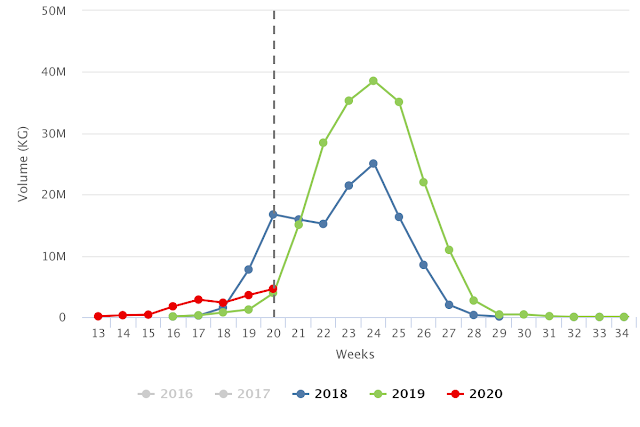
Source: USDA Market News via Agronometrics.
(Agronometrics users can view this chart with live updates here)
Varieties
In 2000, grower had only a dozen commercial table grape varieties from which to choose. These days, growers can select from more than 80 varieties of different shapes, sizes and flavors with longer shelf life, said Dané Joubert, marketing manager for Palm Desert, Calif.-based Sun World International, which specializes in variety development and licensing.
Joubert, based in Paarl, South Africa, is eager to see how consumers respond to trial volumes of Sun World’s new early-season grapes from California. She’s also tracking how varieties sold under brands like Superior Seedless, Midnight Beauty, Sable Seedless, Adora Seedless, Scarlotta Seedless and Autumncrisp – also known as Sugrathirtyfive, her favorite – perform for licensed producers in Mexico, California, Spain, Italy, Portugal, Israel, Morocco, Egypt, Tunisia and Brazil, which has significantly expanded grape acreage.
By mid-May, Giumarra expects to have robust volumes of green Early Sweet and ARRA Sugar Drop, developed in partnership with Grapa Varieties Ltd., said Fernando Soberanes, director of Long Beach, Calif., operations for Giumarra.
“Our red seedless varieties will begin to pick up after Memorial Day, when we will have promotable volumes,” said Soberanes, whose current favorite, ARRA Passion Fire, is characterized by extra-large, crisp red berries and a uniquely sweet flavor.
Colorful secondary bin displays can help create a “grape destination,” said Kellee Harris, western region business director for Giumarra. Bins of imported Mystic grapes – with a grape sorbet recipe on the side panel that shoppers could capture by taking a photo – were a major success this season, said Harris.
Options galore
Greene said Pacific Trellis is looking forward to its first Mexican harvest of Sweet Celebration, along with Sweet Globes, Ivory and Great Green. The company has expanded distribution of its Mexican and California grapes under the Dulcinea brand.
Fresh Farms began harvesting green grapes in the state of Jalisco in late April and marketing them under the Fresh Farms and Molina Quality brands.
Matoian said specialty grape variety Cotton Candy has taken off thanks to social media, prompting the company to triple production in the past four years. “It’s exciting. At the end it really does taste like cotton candy.”
Candy Hearts, Candy Dreams and Candy Snaps from the International Fruit Genetics breeding program are also gaining attention, Matoian said. “If you want to give consumers a grape with a special flavor, these are the grapes.”
His personal favorite, however, is Sweet Globe, crunchy with an apple-honeydew sweetness.
“We’re harvesting in Jalisco and expecting a large number of boxes out of Sonora, followed by big volume out of California,” Matoian said. “For me it’s the best green grape around.”
Matoian is also a fan of long, black Sweet Sapphire. “We find grape sales always increase when retailers buy premium varieties.”
Path to market
Pandol, a fan of early-season Sugar Crunch, said new grapes out of Mexico h
ave their place, but they don’t always fit the U.S. No. 1 standard. Cotton Candy, for example, tends to shatter a lot and turn quite yellow, both considered defects.
“Even though consumers and retailers accept that, a lot of people don’t want to go after some of these tasty grapes because, if they won’t be allowed in, why pursue them?” Pandol said. “That’s been an impediment to planting some of these varieties. It’s a Catch 22 because until you get it in the market and know what’s acceptable, how do you make a standard? Yet I can’t put it in the market until I adapt to the old standard.”
Packaging
When it comes to packaging, the simpler the better, said Pandol, who prefers clear bags with a modest logo and identification. “Why would I hire a graphic artist when I have Mother Nature, the best artist in the world, working for me?”
Giumarra’s Harris also noted that great grapes have natural appeal.
“For the grape category, flavor and texture are of the utmost importance,” she said. “Give consumers an excellent eating experience so they continue to purchase grapes, especially during summer when the produce department is well-stocked with many other varieties of delicious fruit.”
As an alternative to plastic bags, which may or may not continue to be demonized post-COVID, Pacific Trellis is introducing a 100% biodegradable paper tote bag under the Dulcinea brand.
Greene said retailers are looking for fewer graphics on bags as well as options with more protection, such as clamshells and other sealed packaging. “The ideal package would allow consumers to see fruit, communicate key characteristics, and protect the fruit as we use more e-commerce platforms.”
Pandol advises retailers not to plan next year based on this year’s data.
“In COVID-19 coverage they say the economy’s reopening will be data-driven, not date-driven,” he said. “Yet we have retailers fixing promotional dates and prices based on last year, which was based on the year before.
“Don’t look at last year’s numbers,” Pandol said. “Instead, stay away from problems and take advantage of opportunities.”
The News in Charts is a collection of stories from the industry complemented by charts from Agronometrics to help better tell their story.
Access the original article with this (Link)






